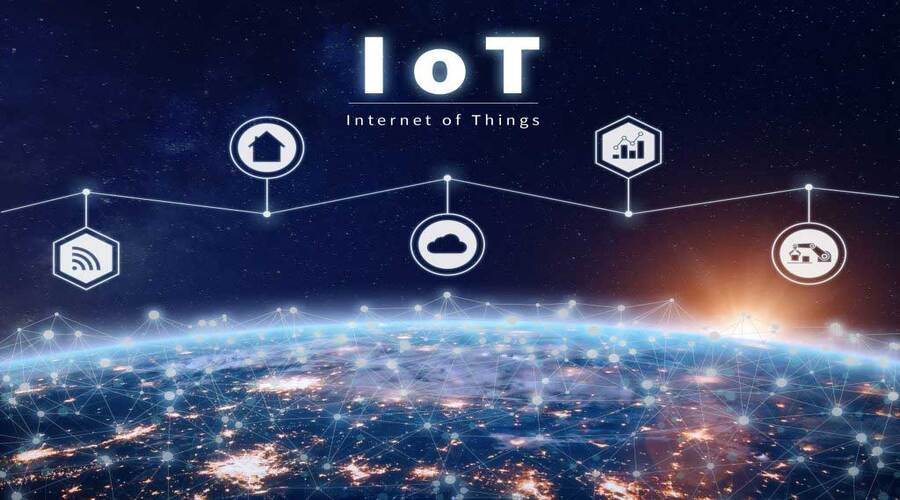Introduction
In today’s rapidly evolving world, the need for effective energy management and sustainable practices has become more critical than ever. To address these challenges, leveraging emerging technologies such as blockchain and the Internet of Things (IoT) can provide innovative solutions. This article explores the potential of blockchain and IoT in the context of energy management and sustainability, highlighting their benefits, applications, and the ways they can revolutionize the energy sector.
Leveraging Blockchain and IoT for Energy Management
The Intersection of Blockchain and IoT
Blockchain technology, with its decentralized and transparent nature, and the Internet of Things, with its network of interconnected devices, offer a powerful combination for energy management. By integrating these technologies, we can create secure, efficient, and automated systems that optimize energy usage, reduce costs, and minimize environmental impact.
Enhancing Energy Efficiency with IoT Sensors
IoT sensors play a vital role in collecting real-time data on energy consumption, grid performance, and environmental conditions. These sensors can be installed in various devices, infrastructure, and even renewable energy sources. By leveraging IoT sensors, energy management systems can monitor and analyze energy usage patterns, identify inefficiencies, and provide actionable insights to optimize energy consumption.
Immutable and Transparent Energy Transactions with Blockchain
Blockchain’s immutable and transparent nature ensures trust and accountability in energy transactions. Through blockchain-enabled smart contracts, energy producers and consumers can securely trade energy in a peer-to-peer manner, eliminating the need for intermediaries and reducing transaction costs. This decentralized approach also enables the integration of renewable energy sources into the grid and promotes the adoption of clean energy solutions.
Leveraging Blockchain and IoT for Sustainability

Renewable energy sources such as solar and wind power play a crucial role in achieving sustainability goals. Blockchain and IoT can facilitate the integration of these decentralized energy sources into existing grids. By using IoT devices to monitor renewable energy generation and blockchain for recording and verifying transactions, excess energy can be efficiently distributed and traded among consumers, ensuring a more balanced and sustainable energy ecosystem.
Enabling Energy Traceability and Provenance
With blockchain’s transparent and tamper-proof ledger, it becomes possible to track the origin and journey of energy from its source to the end user. This traceability ensures the authenticity and provenance of energy, reducing the risk of fraud and promoting sustainable practices. Consumers can make informed decisions about their energy sources, choosing providers with verifiable green energy credentials.
Decentralizing Energy Generation and Distribution
The centralized nature of traditional energy grids often leads to inefficiencies and vulnerabilities. Blockchain and IoT offer the potential to decentralize energy generation and distribution networks, empowering individuals and communities to produce, store, and trade energy autonomously. This decentralization reduces reliance on fossil fuels, fosters local energy resilience, and promotes a more democratic and sustainable energy system.
Blockchain and IoT have the potential to revolutionize energy management and sustainability. By leveraging these technologies, we can optimize energy usage, enhance efficiency, integrate renewable energy sources, and promote transparent and sustainable energy practices. Here are some key pointers to consider:
- Energy Optimization: Blockchain and IoT enable real-time data collection and analysis, allowing energy management systems to identify inefficiencies and optimize energy consumption.
- Peer-to-Peer Energy Trading: With blockchain-enabled smart contracts, energy producers and consumers can trade energy directly, eliminating intermediaries and reducing costs.
- Renewable Energy Integration: Blockchain and IoT facilitate the integration of renewable energy sources into existing grids, promoting a cleaner and more sustainable energy mix.
- Transparent Energy Transactions: Blockchain ensures transparent and tamper-proof energy transactions, fostering trust and accountability in the energy sector.
- Decentralization: The decentralized nature of blockchain and IoT empowers individuals and communities to generate, store, and trade energy autonomously, reducing reliance on centralized grids.
- Traceability and Provenance: Blockchain enables the traceability of energy sources, allowing consumers to make informed decisions and choose sustainable energy providers.
Enhancing Grid Resilience with Decentralized Energy Storage
Decentralized energy storage systems, coupled with blockchain and IoT technologies, contribute to grid resilience. By utilizing IoT sensors and smart meters, energy management systems can monitor energy storage levels and optimize the distribution of stored energy during peak demand periods or in case of power outages. Blockchain ensures the security and transparency of energy storage transactions, enabling reliable and efficient energy management.
Enabling Energy Microgrids for Local Communities
Energy microgrids are localized, self-sufficient energy networks that can operate independently or in conjunction with the main power grid. Leveraging blockchain and IoT, these microgrids can efficiently manage and distribute energy within local communities. IoT sensors enable real-time monitoring of energy production and consumption, while blockchain ensures the integrity of energy transactions. This empowers communities to rely on renewable energy sources, enhance energy resilience, and reduce dependence on centralized grids.
Improving Energy Market Efficiency through Blockchain
Traditional energy markets often involve complex and lengthy processes, with multiple intermediaries and high transaction costs. Blockchain technology has the potential to streamline these processes, reducing bureaucracy and improving market efficiency. Through decentralized energy marketplaces enabled by blockchain, energy producers can directly connect with consumers, facilitating peer-to-peer energy trading. This eliminates the need for intermediaries, enhances price transparency, and promotes fair competition, ultimately benefiting both producers and consumers.
Ensuring Data Privacy and Security in Energy Systems
With the increasing connectivity of IoT devices in energy management systems, ensuring data privacy and security is paramount. Blockchain’s decentralized and encrypted nature offers robust solutions for protecting sensitive energy data. By storing data in tamper-proof blocks, blockchain prevents unauthorized access and tampering, ensuring the integrity and privacy of energy-related information. This builds trust among stakeholders and encourages wider adoption of IoT-enabled energy management systems.
Empowering Energy Consumers with Real-Time Insights
Blockchain and IoT provide energy consumers with real-time insights into their energy consumption patterns, enabling them to make informed decisions about their usage. IoT sensors collect detailed data on energy usage, which is then securely stored on the blockchain. Consumers can access this information through user-friendly interfaces and mobile applications, allowing them to track their consumption, identify areas for improvement, and adjust their energy usage to promote sustainability. This empowers individuals and organizations to actively participate in energy conservation efforts.
Enhancing Energy Grid Flexibility with Blockchain
Blockchain technology enables enhanced flexibility in energy grids by facilitating dynamic energy transactions. Through blockchain-based smart contracts, energy trading can be automated based on predefined conditions such as price, demand, and availability. This flexibility allows for efficient utilization of renewable energy sources and integration of distributed energy resources, contributing to a more resilient and sustainable energy grid.
Enabling Peer-to-Peer Energy Sharing Platforms
Blockchain and IoT enable the development of peer-to-peer energy sharing platforms, where energy producers can directly sell excess energy to nearby consumers. By leveraging IoT sensors to measure energy production and consumption, blockchain technology ensures secure and transparent transactions between participants. This peer-to-peer energy sharing model promotes energy self-sufficiency, reduces transmission losses, and fosters a community-driven approach to energy management.
Advancing Energy Certification and Standards
Blockchain technology can revolutionize energy certification and standards by providing an immutable and transparent platform for verifying and recording energy-related data. With blockchain, renewable energy certificates, carbon credits, and other sustainability-related certifications can be securely stored and easily traceable. This promotes trust and accountability in the energy sector and facilitates the transition to a greener and more sustainable energy ecosystem.
Enabling Automated Billing and Settlement Systems
Traditional energy billing and settlement processes can be time-consuming, error-prone, and inefficient. Blockchain and IoT can streamline these processes by automating billing and settlement through smart contracts. These contracts automatically calculate energy usage, determine charges, and execute payments based on predefined rules. This eliminates manual intervention, reduces administrative costs, and improves the accuracy and efficiency of billing and settlement procedures.
Leveraging Blockchain and IoT for Energy Grid Optimization
Blockchain and IoT technologies enable advanced energy grid optimization through real-time monitoring and control. IoT sensors collect data on energy generation, consumption, and grid conditions, while blockchain ensures the secure storage and sharing of this data. By analyzing the collected information, energy management systems can optimize grid operations, balance supply and demand, and minimize wastage. This leads to more efficient and sustainable energy grid management.
Improving Energy Market Transparency and Fairness
Blockchain technology provides transparency and fairness in energy markets by recording and verifying transactions in a decentralized manner. Through blockchain, all participants have access to the same information, ensuring equal opportunities and preventing market manipulation. This transparency promotes trust among market participants and fosters a more competitive and efficient energy market, ultimately benefiting consumers and encouraging sustainable energy practices.
Strengthening Grid Security and Resilience with Blockchain
The integration of blockchain and IoT enhances grid security and resilience by providing a robust and secure infrastructure. Blockchain’s distributed and tamper-proof ledger protects against cyber attacks and unauthorized access to critical energy infrastructure. Additionally, IoT sensors can detect anomalies in grid performance, enabling rapid response and mitigation of potential security threats. By leveraging these technologies, energy grids can become more resilient to disruptions and better equipped to handle evolving security challenges.
Enabling Decentralized Energy Trading Platforms
Blockchain and IoT enable the development of decentralized energy trading platforms, where energy producers and consumers can directly engage in peer-to-peer transactions. These platforms eliminate the need for intermediaries, reducing transaction costs and increasing efficiency. Through smart contracts and blockchain-based tokens, energy producers can be incentivized for generating renewable energy, while consumers can have greater control over their energy choices. This decentralized approach promotes energy democracy and fosters a more sustainable energy ecosystem.
Leveraging Data Analytics for Energy Optimization
The combination of blockchain, IoT, and data analytics revolutionizes energy optimization. IoT sensors collect vast amounts of real-time energy data, which can be securely stored on the blockchain. Data analytics algorithms can then process and analyze this data to identify energy inefficiencies, predict demand patterns, and optimize energy usage. By leveraging the power of data analytics, energy management systems can make informed decisions, reduce energy waste, and improve overall energy efficiency.
Conclusion
In conclusion, the combination of blockchain and IoT presents immense opportunities for leveraging energy management and promoting sustainability. These technologies offer a range of benefits, including enhanced energy efficiency, transparency in energy transactions, integration of renewable energy sources, and decentralized energy generation and distribution. By utilizing IoT sensors to collect real-time data and blockchain to ensure secure and transparent transactions, energy management systems can optimize energy usage, reduce costs, and minimize environmental impact.






